What It's Like to Be in One Man's Family
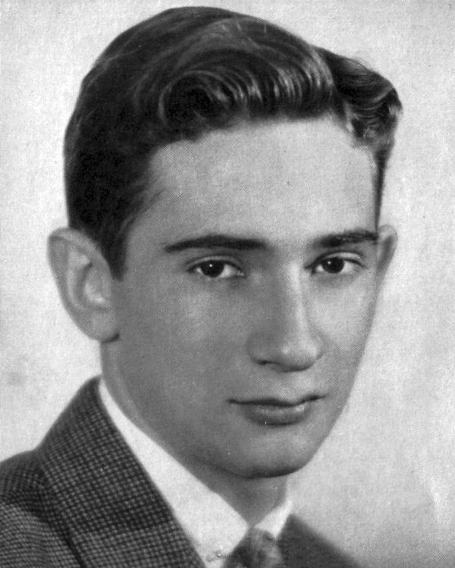
The radio show One Man's Family seems as old as Methuselah, as time-honored as radio, itself, customary as a Sunday night supper. The show has been coming over the ether weekly for 11 years. Eight of those venerable mileposts have had the same sponsor, who still has seven years to go.
The program was first produced by NBC on the west coast as a sustaining in 1932. Two years later it went nationwide, has long since become a radio legend, earned its author half a million dollars -- added steadily to the fortunes of its cast.
In the history of "The Family" there have been four deaths, one divorce, 50 characters introduced -- 12 permanent Sunday night visitors. Out of the half a hundred who have played various parts, most of the original cast still remain through the perpetual saga: Some of them began as script schoolchildren and were written into adulthood, others who started as juveniles are now playing romantic leads. When a member of the cast is drafted, dies, or gets married, so it is written into the script and even though he returns no more, his memory is kept alive through references. Becoming a part of One Man's Family is almost a practical guarantee of a lifetime job, and pleasant security.
The mystery of its appeal is still a mystery. Its theme is nothing more complicated than the daily happenings of an average American home. Its institutional family attempts to intercept certain phases of ordinary happenings, philosophies, weaves in wars, floods and calamities to give it a timeliness, but it always remains the closely knit story of a family of 12. There is little or no conflict. On some shows, nothing actually happens. The characters merely sit around and talk. They aren't witty; they don't tear at your emotions, you are rarely perturbed -- they are certainly never profound. Paul, favorite and beloved character to millions of people, often engages in some quiet talk that is inspiring, but even these choice bits of inspiration are something that you know, already.
The most probable secret of the success of the whole thing is its seeming sincerity. The cast has been playing the parts for so long that they are almost as real to them as their everyday life. When they enter the studio on Sunday night there is a spirit of "going home" quite prevalent, they call each other by their script names and discuss things that happened in last week's show as if it were really part and parcel of their life.
When Page Gilman, who has played Jack, the youngest son, since the show went on the air, was drafted into the Army it affected the whole cast. Quiet, gray, velvet-voiced Mother Barbour called the cast together at rehearsal and said: "The war has come to our household." They were as sad as if Page were son and brother.
Each of them felt a new responsibility toward the war effort. Mother Barbour took up knitting to send him a sweater; Claudia, the script sister, went out and joined the motor corp division of AWVS; radio sister Hazel became a Hollywood canteen hosess. All of which impetus sprang from a radio brother going to the front. At another time the script called for Hazel to have a baby. The event was given a terrific build-up, week after week -- when the script baby finally arrived, it had all seemed so wonderful that Hazel had herself a real baby.
From Tune In, June 1943
Interview with Bobby Benson Radio Cowboy Ivan Cury
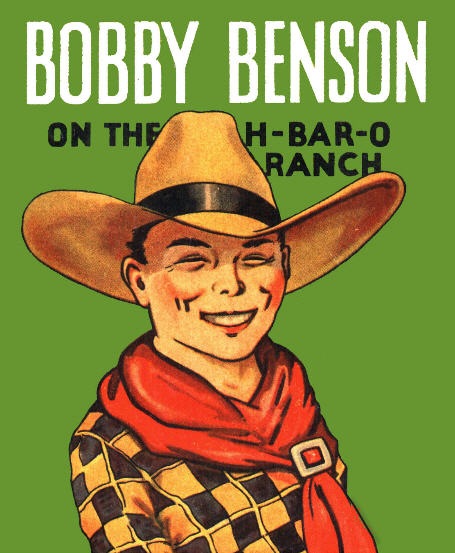
Ivan Cury wanted to be an actor from the word "go." He was born and raised on Manhattan's Upper West Side of parents who immigrated to America. "My dad came from Russia, my mother from either Poland or Austria, depending on which army occupied the land."
At the age of 4, he tried to get a box office cashier to let him into a theater. Six more years went by before he had a chance to try out for a show, but during those years he studied music, dancing, acting -- anything he could to prepare himself. In 1948 at the age of 10 1/2, he won his first role on Let's Pretend. It would be six months before he got his next chance.
He then played the young Joseph Jefferson, opposite Walter Hampton's Abraham Lincoln, on Cavalcade of America. At this tender age he had to learn a lot about living. "Nothing you wouldn't have learned in 10 or 15 years," Cury says.
For the REPS meeting, Cury played cuts from this show, and The Electric Theatre, in which he played Helen Hayes' son. Cury's father had come into the studio and was amazed to see the great actress off by herself working on her script. "How lucky I was to be there," Cury told us.
Cury, of course, is most asked about Bobby Benson and the B-Bar-B Riders. In 1949, producer Herb Rice wanted to resurrect this show, which had previously been broadcast from 1932 to 1936, and Cury won the role of Bobby. Rice renamed the ranch "The B-Bar-B."
During the second year of the show, Cury celebrated his bar mitzvah. Cury recalled, "A cast member whispered 'B-Bar-Mitzvah' to me just before we went on the air, and I broke up laughing all through my on-air 'B-Bar-BEEE' lines."
Don Knotts (Windy Wales on the show) was the second youngest cast member to Cury. Knotts was then in his 20s. Cury, who grew up not eating shrimp, had his first one at the urging of Knotts. "I had another one with him recently."
Herb Rice always pushed the personal appearances of his young star, and Cury appeared in parades, rodeos and festivals throughout the East Coast, riding horseback and wearing western garb. "As a New York boy, I learned about the west through Bobby Benson. I'll never forget riding a stallion behind a mare in heat."
He also will not forget visiting a boy in Poughkeepsie, New York, who had been told he was dying. As Bobby Benson, Cury urged the boy to get out and start doing things, "like Bobby Benson does."
Some time later he visited the boy again, and found him sitting in a wheelchair. As Cury approached, the boy stood up and walked towards him. "It was like a miracle, some sign of God's intervention," Cury says.
Cury was appearing in a show with Maria Riva, daughter of Marlene Dietrich, when his father came in and sat in the darkened client's booth. A woman came in and sat next to him, and they got to comparing notes about how they were both immigrants to America and how their children were both radio actors.
Cury says his father nearly fainted when the lights went on and he saw he had been talking with Marlene Dietrich.
Cury had a part in The Greatest Story Ever Told, in which Joseph Wiseman played Christ. On the air, an actor failed to come in with his line because he was so enthralled with Wiseman's powerful performance. So Wiseman, as Christ, picked up the line, prefacing it by saying, "And you will say to Me ..." and then read the actor's line with no gap in the dialogue.
When he is asked, "Don't you feel you missed your childhood?" Cury responds, "No, I knew The Shadow personally!"
When it came to crime dramas, he also worked on The FBI in Peace and War with its well-remembered "L-A-V-A" to the beat of a timpani. Cury recalled, "It was my voice saying, 'Gee, dad, where's the Lava Soap?" I was paid $60 a show.
He also did Gangbusters ("the cast played poker every minute off the mic") and Official Detective ("Hold the phone, it's time for O'Henry, public enemy number one").
With the coming of television, Cury also won juvenile roles there, including Bobby Benson, while continuing in radio, working with such young actors as David Anderson, Butch Cavell, and Sal Mineo.
He worked with director Sidney Lumet in the teleplay Crime in the Streets, and feels that Lumet "changed my life" by showing him the method actor's way of finding the real emotions of the character he is playing.
Cury's professional acting career came to an end when he started college, but he continued behind the television cameras, first as a make-up man and then into producing and directing, which he still does.
Leaving New York, where he had spent his entire acting career, Cury moved to California in the 1970s, where he has taught Communications Studies at UCLA, and now as an associate professor at California State, Los Angeles. He produces the TV commercials for Men's Wearhouse, and has written a textbook on television production used in many colleges.
Bill Parker and Joy Jackson in Air Check, Fall 1999
Dusting Off an Antique Radio from Grandma's Attic
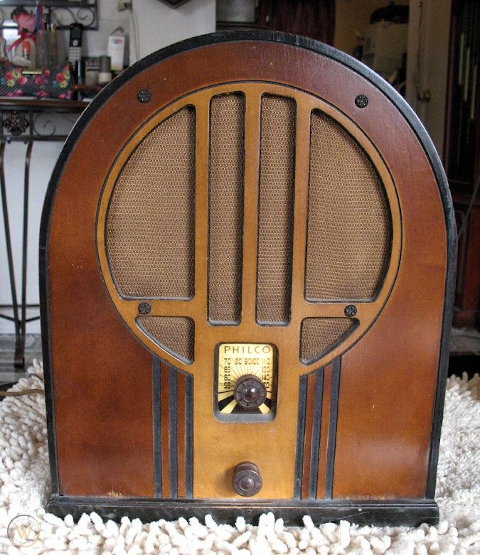
Anyone old enough to recall the days before television remembers that radios, large or small and usually with gleaming wooden cabinets, were the nerve centers of the country's living rooms.
Around them huddled America's families, with only each other to look at, listening intently to Jack Benny's jokes and Benny Goodman's notes, President Franklin Roosevelt's fireside chats and Edward R. Murrow's London reports.
After decades of dusty silence in grandma's attic, nearly three-quarters of a century of radios are sputtering to life again in thousands of American homes. This time the people crowded around them are a swiftly growing family of collectors.
"Our objective is to preserve this equipment, to let people know about it. It's a heritage," says Bruce Kelly, 77, a longtime collector. Forty years ago he and two other men founded what is now America's largest and oldest radio collectors club, the 4,000-member Antique Wireless Association.
"Collecting got off to a slow start in the '50s and '60s, picked up some in the '70s, and really took off in the '80s," says Brian Belanger, 51, a collector and newsletter editor of the Mid-Atlantic Antique Radio Club (MAARC). Founded in 1984 with 15 members, it now has about 850 and is America's largest regional radio club.
During the same time the number of regional radio clubs has grown with similar speed. Today there are two national clubs and about 40 regional ones, Belanger says, and more regional clubs are forming.
Collectors have various motives: nostalgia, the beauty of the venerable radios or the fun of being able to repair them.
Belanger, an electrical engineer from Rockville, Maryland, himself heard the siren song of radio collecting in the late 1970s. One day he was killing time in a shopping center while his wife bought fabric and wandered into an antique store. He came out with his first antique radio, an aptly named "American Beauty," made in 1926 in Missouri. He was hooked; he now has "about 80 radios, the last time I counted."
Days he works with the most modern technology as deputy director of advanced technology program of the National Institute of Standards and Technology. Evenings he works with the technology of the '20s and '30s, repairing venerable radios at home.
They include wonderful old names, now long gone, in the history of American radio. There's an unusual Federal 61, a hard-to-find black-fronted box with 14 dials, made in 1924. A 1922 Aeriola, Sr., by Westinghouse: You had to listen through headphones. A battery-powered Radiola 18, with its long-and-low shape.
And the classic "antique radio" to most Americans -- a graceful, arch-shaped set known as cathedral-style. Many makers built cathedrals: Belanger has several, including a restored 1931 Philco model 70. A dominant '30s brand, Philco epitomizes antique radios to many Americans.
Collecting antique radios is practically an addiction, Belanger says.
Joe Koester knows what he means. A 50-year-old Defense Department manager from Laurel, Maryland, he says dryly: "I never met an antique radio I didn't like," paraphrasing Will Rogers' view of people.
Koester, a founder and president of the Mid-Atlantic Antique Radio Club, has certainly met a lot of radios: He admits to having "about 250" in his collection.
Kelley has been collecting since before Belanger and Koester were born: He and a friend started in 1936. When they saw a radio they thought should be preserved "we repaired it and set it aside," says Kelley, fittingly now the curator of the Antique Wireless Association's museum.
The kinds of radios they set aside then are much desired now. Particularly in demand by collectors are cathedrals; Atwater Kent "breadboards" from the early '20s made without cabinet and with innards fastened atop a breadboard-shaped piece of wood; splended-toned Scott radios; and colorful, Catalin-plastic sets of the late '30s and '40s.
Prices of these and other antique radios depend on condition, manufacturer and model, and location (the East Coast is more expensive). Most range from $50 to several hundred; some, like particularly desirable Catalins, run into the thousands.
As with anything else, high prices reflect scarcity. But most collectors think some old time radios will always be available. One reason, Koester says: "Younger collectors are also interested in the radios of their youth, and are beginning to collect the much-later transistor radios and TVs."
Many radios aren't working when collectors purchase them. Their new owners restore a lot of them, both for the pleasure of seeing them gleam and the joy of hearing them crackle.
And when they crackle they bring back another era. Once in a while Belanger rigs up a '30s set so that he can listen to a recording of an old radio show through its speaker. With 1930s fidelity the raspy voice of Jack Benny fills the room, deadpanning a punchline and convulsing an audience.
"It's fun," Belanger says. "At night you can draw the drapes and turn the lights down low and by the glow of your radio listen to Jack Benny. It's a time warp."
From AARP Bulletin, 1992
Four Radio Shows Hired Les Tremayne to Replace Don Ameche
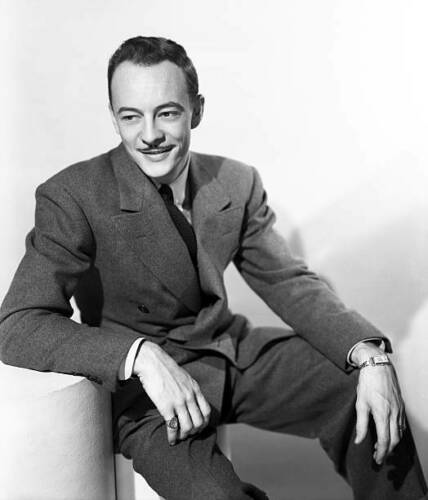
For the first six years of my radio career, I was very particular about keeping a daily record of every show I worked -- the date, time, name of show or episode, each character I played (and sometimes there were up to 10 in a single show!), and, later on, pertinent observations and specific comments pertaining to these or made by others, which I felt important enough to record.
My career accelerated to such an extend (up to 45 shows a week!) that I found it impossible to keep this radio log current and abruptly stopped recording the facts on May 30, 1936.
This curtailment was brought about also by the fact that I took my first vacation beginning on April 20, 1936 -- four days after my 23rd birthday and a month before I began my stint on The First Nighter program as the romantic leading man and co-star with that exquisite actress, my lovely leading lady Barbara Luddy. This role lasted until I quit the show in the middle of 1943 and went to Hollywood for the second time.
Actually, I had been working on The First Nighter on and off in various roles since 1934. The program first hit the air on Thanksgiving night in 1930, over WIBO on Chicago's far north side, with its creator, Charles P Hughes, playing the role of Mr. First Nighter the host. June Meredith was the leading lady and co-star with my dear friend, Jack Doty, a superb actor with an outstanding voice as the leading man. Hardly anyone seems to remember Doty as the original leading man. He wasn't with the show very long, which may account for that fact.
When Doty left, the Campana Company, our sponsor, came up with a young, handsome, dashing leading man named Don Ameche. Ameche, at the time I knew him, was the No. 1 actor around Chicago.
It came about that I -- physically quite opposite to Ameche, which, thank goodness, didn't matter in radio -- replaced him in five different parts on four different shows as he left each program: Capt. Hughes and Coach Hardy, both characters on Jack Armstrong, the All-American Boy (that was primarily because Don's voice was almost identical to that of his younger brother Jim, who played Jack Armstrong); Bob in Betty and Bob; the romantic leading man and co-star with Ann Seymour in Grand Hotel; and ultimately the leading man in The First Nighter.
Les Tremayne in Sperdvac Radio Magazine No. 5, 1984
Related Stories:
- The Marriage of Don Ameche and Honore Prendergast
- Don Ameche's Lucky Break in 1930
- Jean Hersholt and Don Ameche Star in Sins of Man
The Life of Radio Soap Actress Tess Sheehan
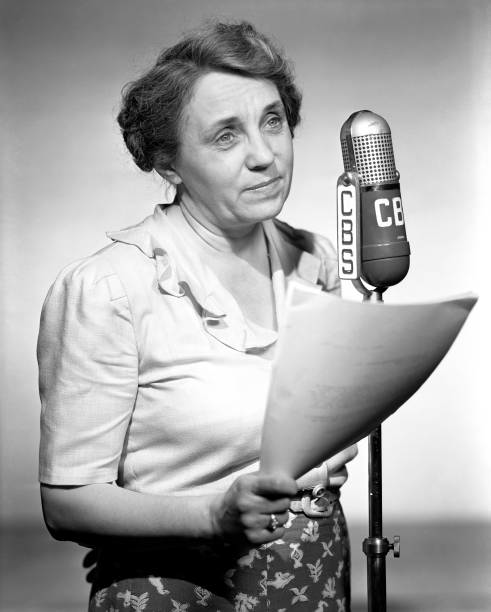
Tess Sheehan has become accustomed to it but when she first turned to radio, she was very much intrigued by the idea of acting in an air-conditioned studio every day. Sheehan, who plays Aunt Dorrie in CBS's Wendy Warren and the News and Nora in NBC's When a Girl Marries, has played to audiences in extremes of heat and cold, in freight sheds and tents, and under American, Canadian, and European skies.
Dramatic training, at the time that Sheehan studied to become an actress, consisted of a complete course in elocution. A Detroit girl -- her father worked his way through the University of Michigan by running a dancing academy -- Sheehan began her career in Canada as a reader. During her 20 years as a headliner on the Chautauqua circuit, she appeared in almost every county seat in the 48 states and every province in Canada.
"Those were the days," she recalls, "when it was all in a day's work to start out in horses and sleds at seven in the morning, with the temperature at 30 degrees below zero, and drive until six at night to put on an evening's entertainment."
One evening her company played in a freight shed where the "heating system" was an oil stove on the platform and the audience sat bundled in furs and blankets because of the intense cold.
During the summer months, the company often played in a tent in heat so intense that the grease paint melted as the actors daubed it on their faces. Sometimes, when violent thunderstorms bent the supporting poles of the tent and heavy rains made the stage a mudslide, Sheehan dispelled the audience's fears with a reading of "How Frogs Go to Sleep," a humorous monologue which she has often rendered on the radio.
During the war, Sheehan joined the USO and toured the European theater with Raymond Massey in Our Town and followed this up with a tour of the Pacific bases in The Ghost Train. Curios from all over the world line the bookshelves of her New York apartment.
From Radio Best, June 1950
The Earliest Radio Shows of the 1920s
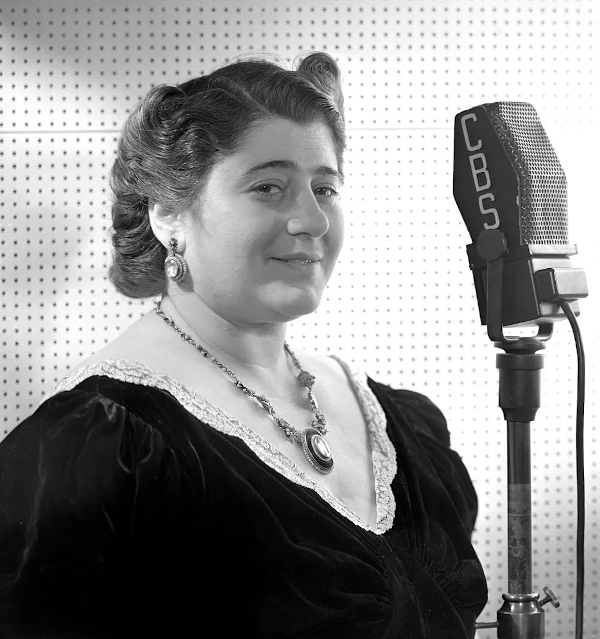
By the middle 1920s, it became obvious that radio manufacturers could no longer support free radio time. Fortunately, advertisers were discovering that radio was one of the most effective means of advertising available. So, it didn't take long after that for radio to become big business. Its popularity continued to grow -- until the biggest programs were heard by more than 40 million people. And advertisers were paying up to $50,000 to sponsor a single program.
The following offers a chronological sampling of some tidbits of old time radio's comings, goings, and happenings during 1927 through 1961.
1927: What is generally considered to be the most popular radio show of all time -- Amos 'n' Andy -- began broadcasting as Sam 'n' Henry in 1927. The name was changed to Amos 'n' Andy in March of the following year. The show had a broadcast history covering 34 years. It was estimated that in 1931, 40 million people listened to the show, almost one third of America's population at that time.
1928: Radio was becoming increasingly popular. New shows this year included The Voice of Firestone, a concert music program, featuring vocalists such as James Melton and Gladys Swarthout, and National Farm and Home Hour, a rustic variety show, which featured Don Ameche, among others. It was referred to as a "review of rural America."
1929: A children's theater show, The Adventures of Helen and Mary, began airing this year. The following year, its name was changed to Let's Pretend, and it continued on until 1954. Its cast of child actors included some familiar names who went on to TV and movie roles -- Billy Halop, Jimmy Lydon, Skippy Homeir, Dick Van Patten, Anne Francis, and Lamont Johnson.
Some other shows premiering this year included the Rudy Vallee Fleischmann Hour. America's radio listeners became familiar with Vallee's opening, "Heigh-ho, everybody," and his signature singing sign off of "Your Time is My Time."
The comedy show The Goldbergs premiered. Who could forget Molly Goldberg's one-sided conversation, up her apartment dumbwaiter, with Mrs. Bloom; and her relationships with her husband Jake, and their children, Sammy and Rosalie, in their apartment at 1038 E. Tremont Ave. in the Bronx. In 1949, the show made a successful transition to television.
Other radio shows premiering this year were H.V. Kaltenborn News, The First Nighter, Headline Hunters, Blackstone Plantation, The Back Home Hour, and the Hour of Charm (featuring "Evelyn and Her Magic Violin" and Phil Spitalny and his "all-girl orchestra").
Charles Beckett in Return With Us Now, April 2003
The Good and Bad of Sears Radio Theater
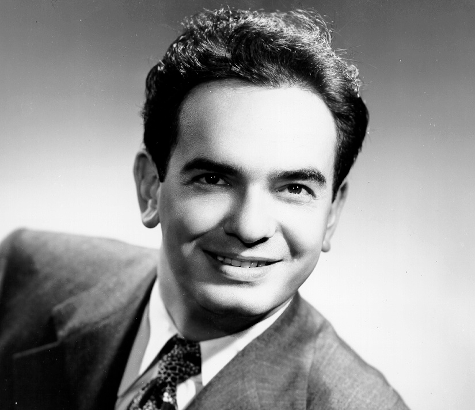
I never liked making generalizations, but I just have to in the case of Sears Radio Theater. I'll try to keep them short, and I'll start with the bad ones and build up in a fantastic crescendo to the good ones. Here goes.
- There are a lot of bad scripts out there. And not even an old pro like Elliott Lewis can save the bad ones. The best way is to not put them on. Even CBS admits that their comedy scripts have not been up to par. Shirley Gordon, writer for comedy, has been moved to other Sears assignments, but still the scripts she writes come out like Grand Marquee or Curtain Time. There have been bad scripts on other nights, too. I don't want Gordon to think I'm picking on her.
- Some of our old friends don't act as well as they used to. I've always marveled at how a radio actor's voice will hardly change over time. Sure they look different, but they don't sound different. It seems that there is another factor involved. Eve Arden was on one Sears comedy, and she sure wasn't the Arden we used to know. Same for Jim Jordan.
- Scripts are inconsistent -- is this a sign of other weaknesses? Suspense had a lot of weak scripts in its 800-plus shows. When you're going five nights a week, it's tough to keep up the quality. This is hard for a radio drama fan to swallow, but it seems to be true.
- Love and Hate night with Cicely Tyson has been much better than I expected. I thought it was going to be full of that "mushy stuff" I hated as a little kid, but the stories have been quite good and well-acted.
- Some of those Adventure scripts are almost as good as Escape. A lot of radio shows would love or would have loved to be almost as good as Escape, and some of these shows have been.
- It's nice to hear the ol' Gunsmoke, Frontier Gentlemen, and other 1950s CBS crews again. Like Vic Perrin, Parley Baer, John Dehner, and the rest of them. CBS 1950s was really good stuff, and it's nice to have some carryover from that fine period.
- It's better than CBS Mystery Theater. It's about time there was something good on the radio. I hope Hi Brown is listening Monday to Friday to see what real radio is like.
And now, it's time for my quick rating system for all five nights
Monday: Western with Lorne Greene. Rating: 2 1/2 (out of 4).
Tuesday: Comedy with Andy Griffith. Rating: 1 1/2. Griffith's a good narrator, but he can do only so much.
Wednesday: Mystery with Vincent Price. Rating: 3. It's nice to hear Price's voice again.
Thursday: Love and Hate with Cicely Tyson. Rating 3 1/2. Tyson has a very soft and warm voice. But who will announce the Hate stories? Seriously, sincere Cicely's voice would be nice to have in a script one night.
Friday: Adventure with Richard Widmark. Rating 3 1/2. Of all the narrators, Widmark is the least suited. Oh, please, William Conrad, apply to the Sears employment office soon!
After a month of Sears, I have to say that I am happy with the series and only hope that it will be around long enough for it to continue to develop and grow into something to really remember. One way for it to do so is to not use the Mystery Theater approach of a small stable of writers. If the work is spread around, the influx of fresh ideas will make Sears Theater all the better.
Joe Webb in Collector's Corner, March 1979
Top 10 Articles
- The Marriage of Don Ameche and Honore Prendergast
- The Night Arthur Godfrey Fired a Singer On Live Radio
- Early Radio Announcers Invented Their Profession in the 1920s
- The Mythical Town of East Tincup, Colorado
- The Earliest Radio Shows of the 1920s
- The Great Radio Detectives of the 1950s
- The Home Life of Jack Benny
- Why Vladimir Horowitz Stopped Performing in the 1930s
- Judy Canova: The Queen of Hillbilly Hokum
- Some of the Unsung Heroes of Radio

